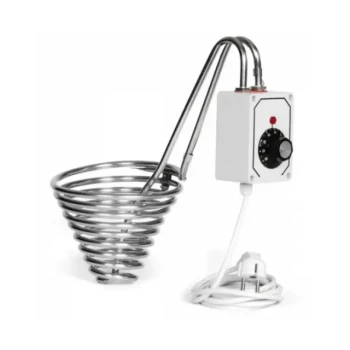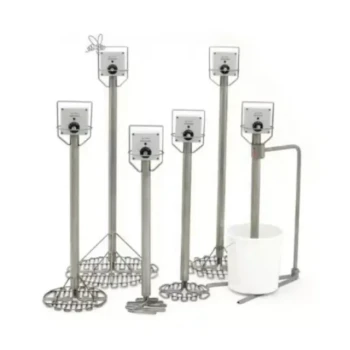Toggle Categories
Get Instant Support
Choose your preferred way to connect with our team
-
Get Free Quote Fill out form for detailed pricing
-
Send Email Detailed inquiry support
-
WhatsApp Quick mobile chat
Response Time
Within 8 hours on working days, 24 hours on holidays
Honey Melter

Stainless Steel Heated Honey Tank Warming Heating Tank
Item Number : HHT-1

Honey Tank Heater Drum Heating Blanket for Honey Barrel
Item Number : HHT-2

Silicone Rubber Honey Drum Heating Belt
Item Number : HHT-3

Professional Thermostatic Conical Honey Melter
Item Number : HHT-4

HONESTBEE Commercial Upright Honey Melter
Item Number : HHT-5
REQUEST A QUOTE
Our professional team will reply to you within one business day. Please feel free to contact us!
Related Articles

How to Heat Honey Without Destroying Its Nutrients: Science-Backed Methods
Learn science-backed methods to heat honey safely without losing nutrients. Preserve enzymes & antioxidants with precise temperature control.

The Unseen Geometry of the Honey Harvest: Why Your Uncapping Tool Fails
Uncapping efficiency isn't about the tool's speed, but matching its design to honeycomb depth. Learn why your tool choice may be slowing you down.

How to Control Honey Moisture Content: Science-Backed Methods for Beekeepers
Learn science-backed methods to control honey moisture content, prevent spoilage, and meet export standards for commercial beekeepers.

The Unseen Battle in Every Honey Bucket: Heat, Time, and Quality
Learn why low, slow heat is crucial for re-liquefying crystallized honey without destroying its enzymes and flavor—a guide for beekeepers.

The Precision Imperative: Why a 30-Second Calibration Prevents a Costly Harvest Failure
Uncalibrated refractometers risk your honey harvest. Learn why this 30-second step is crucial for preventing fermentation and financial loss.

Beyond the Embosser: The Systems Thinking Behind Perfect Beeswax Foundation
A beeswax foundation machine is a system, not a single device. Understanding its components is key to scaling production from manual craft to commercial consistency.

The Hidden Threat After Harvest: Why a Simple Lid Prevents Apiary Disaster
Discover how failing to replace honey container lids immediately after harvest triggers devastating "honey robbing," leading to colony collapse and disease spread, and learn how HONESTBEE's secure equipment protects your apiary.

The Bottleneck in the Honey House: Choosing an Uncapping Tool is a Workflow Decision, Not a Purchase
Choosing an uncapping tool—electric vs. manual—is a critical workflow decision that impacts an apiary's efficiency, cost, and honey quality.

How to Melt Beeswax Safely: Science-Backed Protocols to Prevent Overheating and Fires
Learn science-backed methods to melt beeswax safely, prevent overheating, and handle emergencies. Essential for candle makers and beekeepers.

The Extractor's Edge: Why Preserving Comb is the Key to Apiary Profitability
Explore the critical tradeoff between honey extraction methods. Learn why preserving comb with centrifugal extractors maximizes long-term productivity.

How to Clean Beeswax Properly: A Step-by-Step Guide to Preserving Quality
Learn step-by-step methods to clean beeswax safely, remove impurities, and preserve quality for beekeeping and crafting. Avoid common pitfalls.

Mastering the Craft: A Professional's Guide to Calibrating Your Honey Refractometer

How to Optimize Steam Wax Melting for Higher Yields and Safer Operations
Learn professional techniques to optimize steam wax melting for higher yields, safety, and equipment longevity in beekeeping operations.

How to Clean Your Honey Extractor Safely Without Compromising Honey Quality
Learn safe, natural methods to clean your honey extractor without compromising honey quality or bee health. Ideal for commercial beekeepers.

How Beekeepers Can Maximize Honey Yield and Beeswax Quality from Cappings
Learn how beekeepers can maximize honey yield and beeswax quality by efficiently processing cappings. Boost profits with sustainable methods!

How to Purify Beeswax Like a Pro: Safe Methods for Pharmaceutical-Grade Quality
Learn professional beeswax purification methods to achieve pharmaceutical-grade quality while preserving natural benefits. Ideal for beekeepers and distributors.

How to Optimize Industrial Beeswax Melting: Key Parameters for Quality & Efficiency
Learn key parameters for industrial beeswax melting—temperature control, equipment selection, and best practices for quality & efficiency.

How to Extract Pure Beeswax Efficiently Using Hot Water Methods
Learn efficient hot water extraction for pure beeswax—higher yields, no chemicals. Step-by-step guide with safety tips for beekeepers.

Why Wax Dipping Outperforms Traditional Wood Preservation for Beekeeping Equipment
Discover why wax dipping is the best method for preserving beekeeping equipment—longer-lasting, eco-friendly, and cost-effective compared to paint or chemicals.

How to Optimize Honey Production Through Strategic Super Management
Learn how to optimize honey production with strategic super management, including selection, maintenance, and harvesting techniques for beekeepers.